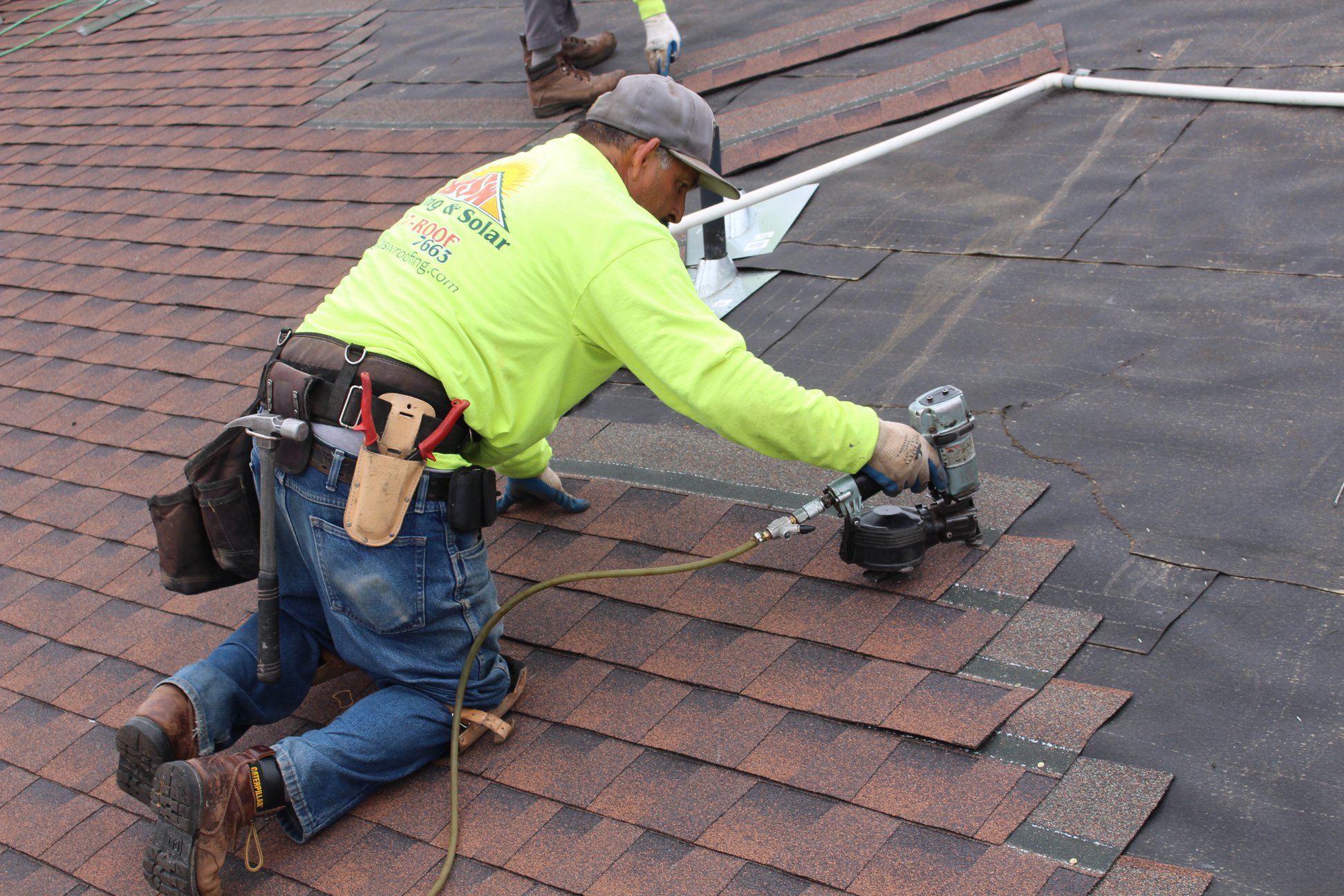Evaluating the Providers Supplied by Roofing Companies in Gainesville Florida
Evaluating the Providers Supplied by Roofing Companies in Gainesville Florida
Blog Article
Ideal Practices for Ensuring Appropriate Roofing Air Flow
Making certain correct roof covering air flow is essential for the longevity and performance of a roof. A balanced consumption and exhaust vent proportion, typically 1:300, plays a crucial role, with intake vents preferably positioned at the reduced side of the roofing for awesome air entrance and exhaust vents at the height for warm air leave. Normal examinations to recognize blockages and preserve clear air flow are vital. In addition, keeping insulation far from vents is important to stop air flow restriction. Comprehending these fundamental aspects establishes the phase for even more comprehensive insights right into installation and maintenance practices that can substantially enhance your roof covering system's performance.
Understand Ventilation Fundamentals
Correctly recognizing air flow basics is vital for guaranteeing the long life and effectiveness of roof. Reliable ventilation reduces moisture buildup and temperature level extremes in the attic room, both of which can result in significant structural damage over time. A well-ventilated roofing system helps in avoiding typical problems such as mold growth, wood rot, and ice dams, which can jeopardize the honesty of the roofing materials and the underlying structures.
The primary goal of air flow is to facilitate the movement of air, permitting for a regular exchange in between the interior and outside settings. This balance is attained via a mix of consumption and exhaust vents that collaborate to preserve optimal airflow. Intake vents, generally situated along the eaves or soffits, enable fresh air to enter the attic room room, while exhaust vents, commonly situated at or near the roof ridge, make it possible for warm, humid air to leave.
Key variables affecting the performance of roof ventilation consist of correct positioning, adequate sizing, and ensuring that both consumption and exhaust vents are unblocked. Normal assessment and maintenance are vital to identify possible obstructions, damages, or inefficiencies in the ventilation system, thus safeguarding the roofing system's efficiency and resilience.
Sorts Of Roof Covering Vents
Roof vents play a vital duty in preserving effective attic ventilation and, by extension, the total wellness of the roof. Numerous kinds of roofing vents are offered, each with special benefits tailored to particular roofing requirements. Ridge vents, as an example, are set up along the roofing's top, enabling warm, humid air to leave from the attic. They provide continuous air flow and mix perfectly with the roofline, making them both reliable and aesthetically pleasing.

Soffit vents are mounted under the eaves and operate in tandem with roof covering vents to guarantee a balanced intake and exhaust system. By allowing cooler air to enter from below, soffit vents facilitate the expulsion of warm air through upper vents. Gable vents, situated on the exterior walls of the attic, deal another effective remedy, particularly in homes with saddleback roofs.
Assess Your Present Air Flow

Next, consider the age and condition of your roofing materials and ventilation components. Older systems may not follow current building ordinance or may have worn away gradually, reducing their efficiency. Conduct an extensive examination to determine any type of indications of wear and tear, such as rust, damages, or voids that might endanger the system's performance.
Furthermore, gauge the Visit Website attic temperature level and moisture degrees. High temperature levels and moisture can indicate inadequate ventilation - roofing companies in gainesville florida. Make use of a hygrometer and thermostat to obtain exact readings, contrasting them with outdoor problems. Relentless discrepancies suggest potential concerns that need resolving.
Installation Best Practices
Reliable setup of roof ventilation systems is critical for ensuring optimal performance and long life. Proper installment starts with comprehending the particular air flow demands of the roof and the structure it covers. This includes determining the appropriate proportion of consumption to exhaust vents, generally sticking to the 1:300 policy, which specifies one square foot of ventilation for every 300 square feet of attic room floor room.

Intake vents need to be set up at the roof's reduced edge, often in the soffits, to enable cool air to go into. Exhaust vents, on the various other hand, must be installed near or at the roof's top to promote the leave of cozy, wet air.
Seal all vent links thoroughly to avoid air leaks and potential water seepage. Usage high-quality products and comply with maker guidelines to make sure longevity and effectiveness. In addition, incorporating ridge vents with baffles can substantially improve air movement efficiency by avoiding wind-driven rain and snow from entering the attic.
Eventually, specific setup of roofing air flow systems minimizes potential concerns such as mold and mildew development, ice dams, and structural damages, making certain the roofing's stability and the building's total health.
Normal Maintenance Tips
Consistency in maintenance practices is essential to making sure the long-term effectiveness of roof ventilation systems. you could try these out Normal examinations are vital, preferably executed biannually-- in the springtime and autumn. Throughout these inspections, make sure that vents are complimentary of particles, nests, and various other obstructions that can impede air movement. Look for any type of indications of dampness buildup or mold, as these can suggest improper ventilation or leaks (gainesville fl roofing companies).
Cleansing the vents is one more essential job. Make use of a soft brush or a vacuum cleaner to eliminate dust and debris from intake and exhaust vents. Beware not to damage the air vent displays or louvers throughout the procedure. In addition, inspect the attic area for any type of indications of water damages, which might endanger the integrity of the roofing system.
Proper insulation is just as essential. Guarantee that attic insulation does not obstruct the vents, as this can drastically limit air movement. Rearrange or replace it to preserve a reliable barrier. if any type of insulation has shifted or worked out.
Last but not least, change any damaged or missing out on elements without delay. Damaged vents, split roof shingles, or scrubby flashing can all contribute to inadequate air flow and ought to be addressed right away. Routine maintenance guarantees that the roofing air flow system works optimally, consequently extending the life-span of the roof itself.
Final Thought
Making sure proper roof covering air flow is critical for preserving the efficiency and toughness of a roofing system. Adherence to the 1:300 intake and exhaust vent proportion, coupled with the critical positioning of vents, is vital. Routine semiannual evaluations, debris cleansing, and making sure insulation does not block air movement are critical practices. Implementing these finest methods will foster a well-ventilated roofing system, thus mitigating possible issues connected to moisture accumulation and excessive warmth, inevitably extending the roofing system's life expectancy.
A well balanced intake and exhaust vent proportion, frequently 1:300, plays a critical role, with consumption vents ideally placed at the lower edge of the roof for trendy air access and exhaust vents at the peak for warm air leave. Intake vents, normally located along the soffits or eaves, permit fresh air to enter important site the attic room room, while exhaust vents, often located at or near the roofing system ridge, enable hot, damp air to escape.
Soffit vents are mounted under the eaves and work in tandem with roofing system vents to guarantee a balanced intake and exhaust system. By permitting cooler air to go into from below, soffit vents help with the expulsion of hot air with top vents. Adherence to the 1:300 consumption and exhaust air vent ratio, coupled with the critical placement of vents, is necessary.
Report this page